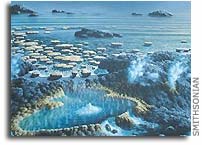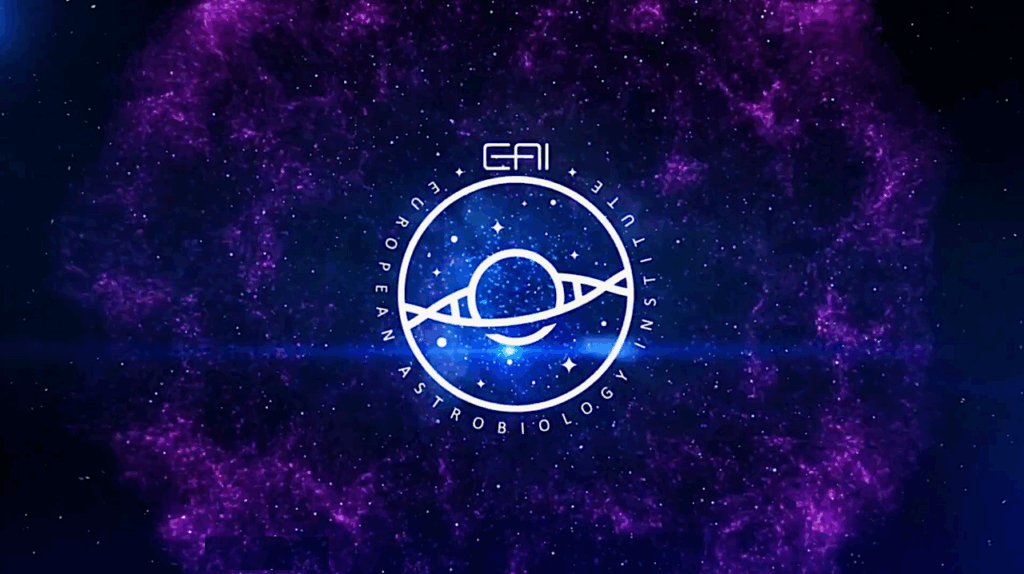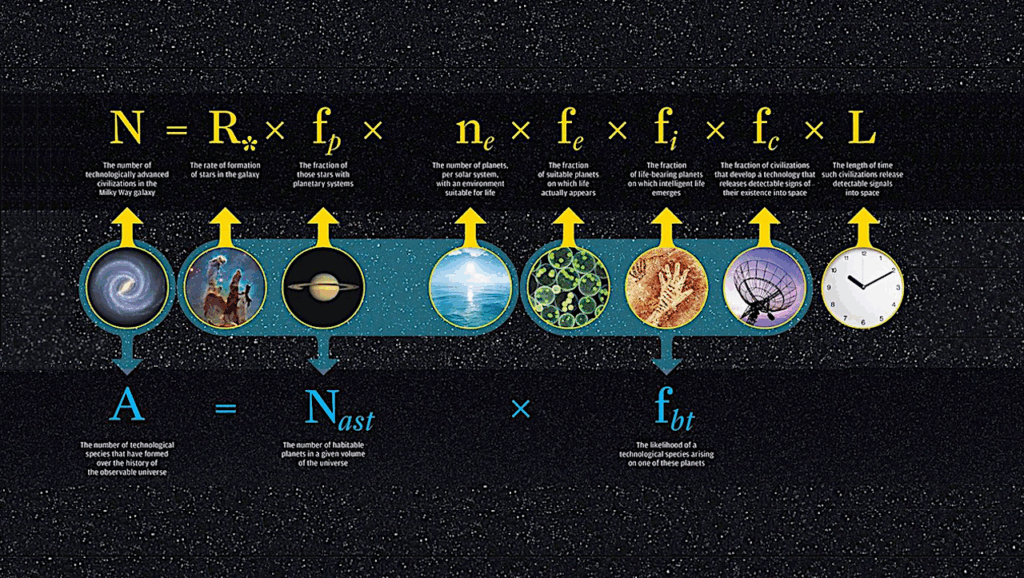Testimony of Dr. Sara Seager, Hearing on Astrobiology

“We stand on a great threshold in the human history of space exploration.”
Dr. Sara Seager
Professor of Planetary Science, Professor of Physics, Class of 1941
Professor Massachusetts Institute of Technology
before the House Committee on Science, Space, and Technology
United States House of Representatives December 4, 2013
Mr. Chairman and Members of the Committee, thank you for the opportunity to appear today to discuss astrobiology and the search for biosignatures in our Solar System and beyond.
We stand on a great threshold in the human history of space exploration. On the one side of this threshold, we know with certainty that planets orbiting stars other than the Sun exist and are common. These worlds beyond our Solar System are called exoplanets, and astronomers have found (statistically speaking) that every star in our Milky Way Galaxy has at least one planet. NASA’s Kepler space telescope has found that approximately one in five Sun-like stars should host an Earth-size exoplanet in the star’s habitable zone, the region around the star that is not too hot, not too cold, but just right for life. On the other side of this great threshold lies the robust identification of Earth-like exoplanets with habitable conditions, and with signs of life inferred by the detection of “biosignature gases” in exoplanetary atmospheres. If life is prevalent in our neighborhood of the Galaxy, it is within our resources and technological reach to be the first generation in human history to finally cross this threshold, and to learn if there is life of any kind beyond Earth.
Biosignature gases, definitions and approach
I will now turn to the scientific means by which we can cross this historic threshold, the study and future observation of exoplanet biosignature gases. In exoplanet research, we define biosignature gases as gases produced by life that can accumulate in a planetary atmosphere to levels detectable remotely by large telescopes. We make the assumption that life uses chemistry to capture and store energy, and that life’s chemistry generates gaseous products.
Earth’s most robust and abundant biosignature gas is oxygen, produced by plants and photosynthetic bacteria. Oxygen fills Earth’s atmosphere to 20 percent by volume, but without photosynthetic life, our planet would be virtually anoxic, with only the faintest trace of oxygen in its air. While there are “false positive” scenarios in which atmospheric oxygen could be generated by non-living processes, such scenarios can be disentangled by observations of other gases in the atmosphere. Life on Earth generates hundreds of different gases, but usually in quantities insufficient for remote astronomical detection; some additional biosignature gases that have been considered for exoplanets include methane (CH4), nitrous oxide (N2O), methyl chloride (CH3Cl), dimethylsulfide (DMS), and others. Potential astronomical observations are limited to life that generates a detectable spectroscopic signal, such that subsurface and other life that has minimal gas output will not be detectable. In addition to biosignature gases the search for water vapor (H2O) is key to inferring the presence of surface liquid water, a substance fundamental to all life on Earth.
I emphasize that we will not know if any biosignature gases upon an exoplanet are produced by intelligent life or by simple single-celled bacteria.
To determine the presence of biosignature gases we will need to use technically challenging, but standard astronomical telescope observing techniques to gather data on exoplanet atmospheres. We will use fundamental laws of physics and chemistry as applied to atmospheric models of the kind employed for the last few decades for solar system planets, but with adaptations for exoplanet atmospheres.
Ideally we would hope to detect oxygen (or ozone, a byproduct of oxygen), in an Earthlike exoplanet’s atmosphere, but there is no guarantee that life elsewhere will generate the same gases that life on Earth does. Thus the thrust of biosignature gas research is to search for biosignature gases that “don’t belong,” gases that are many orders of magnitude out of equilibrium with the exoplanet atmosphere based on basic physics and chemistry. My own current research focuses on an exhaustive list of potential biosignature gases and which, based on detailed atmosphere models, can accumulate to remotely detectable levels in a wide range of conceivable exoplanet atmospheres. With these models I will interpret future data to identify gases and the likelihood that any can be attributed to life.
At present astronomers have not yet found suitable exoplanets for biosignature gas searches, because small rocky exoplanets of the type we believe are most likely to support conditions conducive to life are not observable using currently available telescopes. Future space missions will be able to study atmospheres of potentially habitable worlds. Astronomers have, however, observed atmospheres of about three dozen exoplanets with the Hubble Space Telescope and the Spitzer Space Telescope, as well as to a lesser extent with ground-based telescopes. Astronomers have been able to infer planetary temperatures and the presence of clouds, and they have identified the atmospheric presence of water, carbon monoxide, sodium, and other substances. The atmospheres studied so far are mostly limited to those of hot giant exoplanets that orbit close to their stars; giant planets in general have no surface and are too hot for life.
The progress and evolution of the field of astrobiology
The progress in the search for life beyond Earth resulting from NASA-supported astrobiology has been tremendous. The search for rocky worlds, the study of exoplanet atmospheres, and the burgeoning framework for prediction and interpretation of biosignature gases all fall under the astrobiology research umbrella. Through the start of the NASA Astrobiology Institute in 1998, NASA brought the then-obscure field of astrobiology to prominence and facilitated its interdisciplinary synthesis of astronomy, biology, chemistry, physics, and geology.
Resources, technologies, and methods
To find small exoplanets bright enough for atmosphere characterization, including the search for biosignature gases, we must find planets orbiting stars that are close to our own Sun. Although NASA’s Kepler space telescope has provided a critical census of exoplanets and has found a multitude of small exoplanets, the Kepler exoplanets are too distant from Earth for near-future follow-up studies of their atmospheres.
NASA’s TESS mission (Transiting Exoplanet Survey Satellite), scheduled for launch in 2017, will survey nearby stars for transiting exoplanets. Transiting exoplanets are those that pass in front of their parent star as seen from the telescope, and this is the same technique NASA’s Kepler mission used to discover more than 3,500 exoplanet candidates. TESS is a NASA Explorer-class mission (230 million dollars cost cap, exclusive of launch costs) led by MIT. TESS will carry four identical specialized wide-field CCD cameras, each covering 24 degrees x 24 degrees on the sky with a 100 mm aperture. In a two-year all-sky survey of the solar neighborhood, TESS will cover 400 times as much sky as did Kepler. In the process, TESS will examine more than a half million bright, nearby stars, and will likely find thousands of exoplanets with orbital periods (i.e. “years”) up to about 50 days. TESS will not be able to detect true Earth analogs (that is, Earth-size exoplanets in 365-day orbits about Sun-like stars), but it will be capable of finding Earth-size and super Earth-size exoplanets (up to 1.75 times Earth’s size) transiting M stars, stars which are significantly smaller, cooler, and more common than our Sun. TESS is projected to find hundreds of super Earths with a handful of those in an M star’s habitable zone. Extensive follow-up observations by ground-based observatories in the United States and i
nternationally will then be used to measure the planet mass to confirm the exoplanets as being rocky.
NASA’s James Webb Space Telescope (JWST), scheduled to launch in 2018, will be capable of studying the atmospheres of a subset of the TESS rocky exoplanets in visible, near infrared, and infrared light. The technique JWST will use is called transit spectroscopy. As a transiting exoplanet passes in front of its host star, we can observe the exoplanet’s atmosphere as it is backlit by the star. Additional atmospheric observations can be made by observing as the exoplanet disappears and reappears from behind the star. In these observations the exoplanets and their stars are not spatially separated on the sky but are instead observed in the combined light of the planet-star system. We anticipate TESS will find dozens of super Earths suitable for atmosphere observations by JWST, including several that could potentially be habitable. The chance for life detection with the TESSJWST combination–albeit small–is a possibility if life turns out to be ubiquitous.
The exoplanet discovery and atmospheric characterization techniques of the TESS-JWST combination are powerful, but are very limited to the rare set of exoplanets that are fortuitously aligned to transit their host stars. A different kind of exoplanet finding and characterization technique is required to increase the chances of finding an exoplanet with habitable conditions and signs of life. Simply put, we need to take pictures of potentially habitable exoplanets. Astronomers call this direct imaging. To maximize our chances for finding life beyond the Solar System, we must develop the capability to directly image exoplanets around as many nearby stars as possible.
Any Earth-like exoplanets within dozens of light-years are not fainter than the faintest galaxies ever observed by the Hubble Space Telescope, but, first, to detect biosignature gases we have to divide the light into individual wavelengths to detect spectra hence we will ultimately need telescopes larger than Hubble, and second and even more challenging is that these exoplanets are adjacent to a parent star that is up to 10 billion times brighter than the planet itself. The challenge of direct imaging of an Earth analog is likened to the search for a firefly in the glare of a searchlight, when the firefly and searchlight are about 2,500 miles distant, such as the separation between Washington, D.C. and the west coast of the United States. Direct imaging to find and characterize small exoplanets requires space telescopes above the blurring effect of Earth’s atmosphere.
Two different direct imaging techniques are currently under development by NASA that in the future could enable direct imaging of Earth analogs. One is the internal coronagraph, where specialized optics are placed inside a space telescope to block out the parent starlight and reveal the presence of any orbiting exoplanets. The telescope must be highly specialized, with an observatory system that has exceptional thermal and mechanical stability. Tiny telescope imperfections that scatter starlight can be canceled out using a small mirror with thousands of adjustable elements. The corrections are equivalent to the telescope’s primary mirror being smoothed to sub nanometer levels, a dimension many thousands of times smaller than the width of a human hair. Such control has already been demonstrated in a laboratory vacuum test setup, at the instrument subsystem level. NASA has supported university and NASA center-based studies of a variety of different coronagraph architectures, including deformable mirrors for ultra precise wavefront control, and facilities including the High Contrast Imaging Testbed (HCIT) at the Jet Propulsion Laboratory. NASA is investigating the addition of an internal coronagraph instrument to the AFTA-WFIRST1 mission, and while such an instrument would not reach down to observe small exoplanets, it would be able to study atmospheres of giant exoplanets.
The second NASA-supported technique for direct imaging of Earths is a starshade and telescope system. A starshade (also called an external occulter) is a spacecraft with a carefully shaped screen flown in formation with a telescope. The starshade size and shape, and the starshade-telescope separation are designed so that the starshade casts a very dark, and highly controlled equivalent of a shadow, where the light from the star is suppressed while leaving the planet’s reflected light unaffected; only the exoplanet light enters the telescope. Most designs feature a starshade tens of meters in diameter, and separated from the telescope by tens of thousands of kilometers. The starshade and telescope system may be the best near-term step for discovering and characterizing nearby Earth analogs; because the starlight blocking is done by the starshade outside of the telescope itself, the telescope system throughput can be made very high and a relatively simple and small commercially available space telescope can be used. Starshade technology development draws on industrial heritage of large space-based deployable radio antennas. So far, technology milestones include subscale vacuum chamber and environmental demonstrations, precision manufacturing of starshade petal edges, and starshade occulter stowage and deployment. Current lab-based experiments have demonstrated dark shadows within about an order of magnitude of what is required in space.
1Astrophysics Focused Telescope Asset; Wide-Field Infrared Survey Telescope NASA is currently supporting science and technology definition teams (STDTs) for both the internal coronagraph and the starshade for Probe-Class mission concepts (cost cap under 1 billion dollars) and these studies will be completed by January 2015. I chair the starshade STDT.
My personal vision for the path to find small planets and search for biosignature gases is as follows.
1. The TESS-JWST combination is our first step to discover and characterize potentially habitable exoplanets transiting the nearest small stars.
2. Direct imaging of exoplanets via a small-telescope space mission to both prove the technology and deliver breakthrough exoplanet science, at the same time laying the groundwork for a larger-scale system. Both the internal coronagraph and the starshade must be supported until we are confident of which is the best approach; both may be needed. The internal coronagraph technique is under study for instrumentation on AFTA and will be able to observe atmospheres of known giant exoplanets. The starshade has two options for near-term implementation. One option is a starshade built separately but flown in combination with AFTA; in this case AFTA must be launched to an orbit away from Earth orbit (to minimize pollution from Earth’s reflected light and to enable largeseparation formation flying). The second option is a complete mission of the starshade and telescope system, under the Probe-class category. The latter option could reach a few dozen stars to search for Earths. If needed, to reduce the overall cost the United States could develop and build the starshade while international partners could supply the telescope and its spacecraft and launch vehicle.
3. Direct imaging for exoplanet detection and atmospheric search for biosignature gases via a large space-based telescope. To be certain of finding a large enough pool of exoplanets to search for biosignature gases, we require the ability to directly image exoplanets orbiting 1,000 or 10,000 of the nearest Sun-like stars. This will require a nextgeneration space telescope beyond JWST, a visible wavelength telescope with a large diameter likely exceeding 10 meters. Studies are ongoing within the astronomy community and NASA to outline the mission concept and technology investment required.
The practicalities and budget realities may not permit the detection of biosignature gases in the near future. However, the first step towards the robust identification of potentially habitable worlds will be made with the TESS-JWST combination.<
br/>
The second step in the above vision is within reach if we consider that the astrophysics funding wedge currently supporting the JWST can and should be repurposed in the future for exoplanet-focused space-based direct imaging missions.
The third step can be supported in the short term by continued technology development for the internal coronagraph, the starshade, and large space-based mirrors and telescopes. The development of large space-based mirrors has additional applications in many areas of astronomy and defense.
The value of astrobiology
Astrobiology and the search for life beyond the Solar System contributes directly to one of NASA’s main science questions, ” Are we alone?” The quest for understanding of the origin and evolution of habitable worlds and life beyond the Solar System is specified in NASA documents including the 2010 National Space Policy, 2011 NASA Strategic Plan, 2010 SMD Strategic Plan, 2012 Astrophysics Strategic Plan, and the National Academy of Sciences Astrophysics Decadal Survey, the 2010 New Worlds New Horizons.
NASA missions inspire the next generation of explorers. My experience with science and engineering students at MIT and elsewhere is that they crave to work on challenging and meaningful technical problems, and few if any efforts are more attractive in this regard than the search for life beyond Earth using advanced space missions. Even though most students may not end up as exoplanet researchers or planetary science mission engineers, with their advanced technical skills and abilities they will go on to work in and greatly contribute to many other research areas, including aerospace technology development, remote sensing, and data analysis. By investing in university-supported astrobiology spacemission related research we can continue to train a workforce for technology leadership of the future. As a nation we must continue to be bold in our space endeavors, so as to not only inspire the next generation but also to keep a skilled workforce at the forefront of technology.
The lure of astrobiology is not limited to undergraduate and graduate students. Exoplanets and specifically the promise of finding other Earths offer major opportunities for deep public engagement. Exoplanet discoveries are constantly in the news. People of all walks of life are inspired by astrobiology, and so many seek to be involved, either students via STEM education or other individuals through grassroots internet-based “citizen science” projects. People all around the world, at all levels, from individuals to organizations, are awakening to the realization that finding life elsewhere in our Galaxy would forever change how we see ourselves and our place in the cosmos.
In July 2010 I became a citizen of the United States of America, motivated by our nation’s uniqueness in its combination of technological forte, allocated resources for space missions, and ambitious spirit. It is within the power of our influence to cross the great historical threshold and be the first generation in human history to map the nearby exoplanetary systems and find signs of life on other Earth-like worlds. As a country, this achievement may prove to be our greatest legacy. As a species, it may be the beginning of our boldest adventure. I imagine that hundreds or a thousand years from now, our descendants will find a way to travel to these nearby star systems, and embarking on their interstellar journey will look back upon us here in the 21st century as those who first found the Earth-like worlds.
Mr. Chairman and Committee this concludes my remarks. Thank you for your attention and your continued support of this revolutionary area of research.








